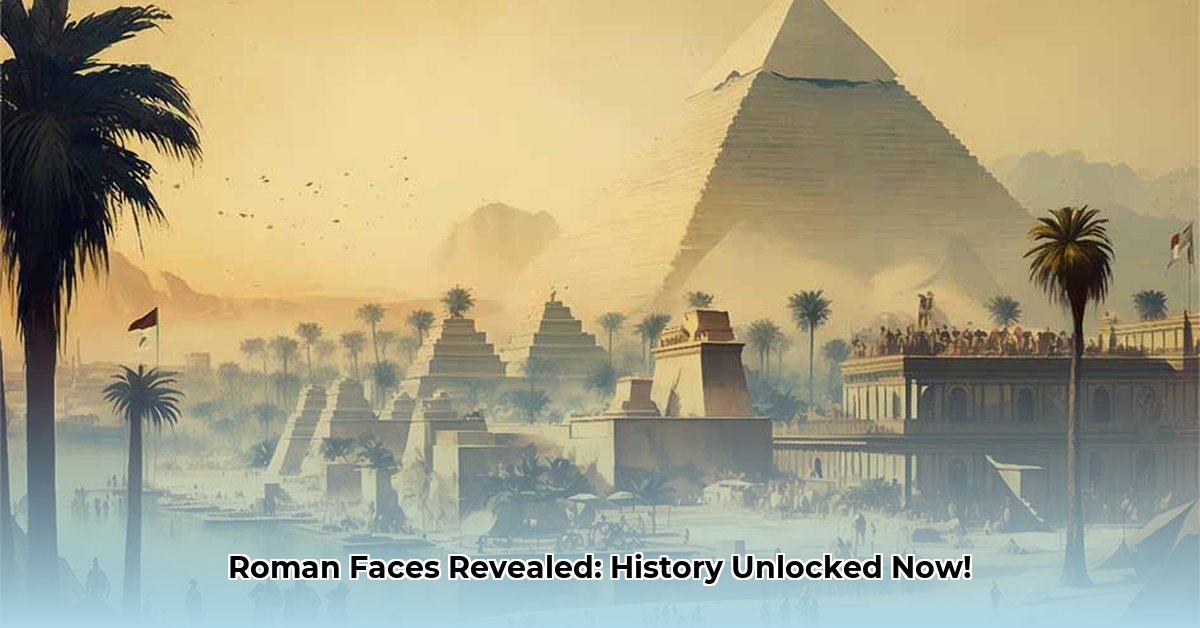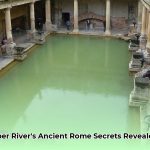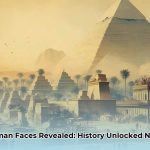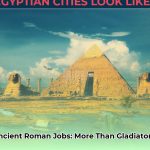Ever wondered what the people of ancient Rome truly looked like, beyond the idealized, flawless perfection often depicted in marble statues? Unveiling these authentic visages is a sophisticated fusion of rigorous scientific inquiry, advanced technological applications, and nuanced artistic interpretation. Modern techniques leverage the enduring power of skeletal remains, cutting-edge digital tools, and extensive historical context to transcend artistic ideals, exploring the genuine human features of those who built and shaped an empire that profoundly influenced Western civilization. This deep dive explores the fascinating methodologies, inherent challenges, and critical ethical considerations involved in meticulously bringing ancient Roman faces back to life for contemporary understanding.
The Blueprint from Bones: What Skeletal Remains Reveal
At the core of any accurate facial reconstruction lies the skull. These remarkably preserved skeletal remains serve as invaluable historical documents, providing a foundational blueprint for an individual’s appearance. The scientific examination of these bones, known globally as osteological analysis, empowers researchers to decipher crucial details about a person’s life and their unique physical attributes. But what specific narratives do these millennia-old bones whisper across the sands of time?
Osteological Analysis: Decoding the Human Story
Through meticulous study of cranial shape, patterns of dental health, and any tell-tale signs of injury, disease, or even intentional modifications (such as cranial binding or deformation), archaeologists, bioarchaeologists, and forensic anthropologists can infer a wealth of information. This includes precise insights into an individual’s approximate age at death, biological sex, ancestral background, overall health status, long-term dietary habits, and even the physical toll exacted by their daily lives and occupations. For instance, severe dental wear might strongly indicate a diet heavy in coarse grains or tough, unprocessed foods typical of Roman cuisine, while specific bone lesions or growth patterns could point to chronic illnesses, nutritional deficiencies like anemia (cribra orbitalia, porotic hyperostosis), or even infectious diseases that subtly altered facial contours over time. The robusticity of muscle attachment points on the skull can also suggest a person’s physical activity levels. Such detailed osteological examination is the critical, foundational first step in reconstructing a plausible and historically grounded visage for an ancient Roman.
Bringing Faces to Life: The Reconstruction Process
Translating an ancient skull into a recognizable, lifelike face requires a meticulous, multi-stage process that seamlessly marries scientific precision with skilled artistry. This intricate methodology transforms inert bone into a compelling approximation of a living, breathing individual. How exactly do experts bridge the vast temporal and anatomical gap between skeletal structure and the appearance of soft tissue?
Some of their hairstyles are now inspiring trends; see more on ancient Roman hairstyles.
Digital Foundations: 3D Scanning and Modeling
The reconstruction process typically begins with 3D scanning the expertly preserved skull. This non-invasive, high-resolution technique captures every minute detail of the bone’s surface and internal structure, generating an incredibly accurate digital replica. This digital modeling forms the robust, measurable foundation upon which all subsequent layers of tissue will be meticulously built. Think of it as creating an exact, three-dimensional blueprint that allows for precise measurements, detailed analysis, and the ability to rotate and examine the skull from every angle without physical handling. This digital framework significantly enhances the objectivity, repeatability, and collaborative potential of the reconstruction process compared to purely manual methods.
Soft Tissue Approximation: The Challenge of Flesh
Once the digital skull is established and precisely measured, the most challenging and artful phase begins: digital soft tissue approximation. This critical step involves estimating where muscles, fat, glands, and skin would have been layered upon the bone. This process heavily relies on tissue depth markers—statistical averages for the thickness of tissue at various points on the face, typically derived from extensive databases of modern populations, stratified by age, sex, and ancestry.
However, this is where significant challenges and interpretive nuances arise. Ancient Roman diets, lifestyles, environmental factors, and distinct genetic variations may have resulted in different average tissue distributions compared to contemporary populations. Researchers meticulously scrutinize subtle clues directly on the skull itself, such as the size and prominence of muscle attachment points, the overall bone density, and any skeletal changes due to illness or trauma, to guide their estimations and refine the overall facial structure to be as historically accurate as possible. This stage requires a deep understanding of human anatomy and forensic art principles.
Unveiling the “Average” Roman Face: Beyond the Ideal
While many ancient Roman portrait busts idealized features, scientific reconstructions, combined with historical texts, reveal a far more diverse and realistic picture of their appearance. The Roman Empire was a melting pot, drawing people from across Europe, Africa, and Asia, leading to a wide range of physical characteristics.
- Facial Features and Nose Shape: One of the most iconic features, often called the “Roman nose” or aquiline nose, was characterized by a high, protruding bridge with a slight to pronounced bend or curve, resembling an eagle’s beak in profile. While common, not all Romans possessed this feature; sculptures and frescoes show many women with more refined, thinner noses. Scientific reconstructions often portray broad, high foreheads, prominent noses, wide-set eyes, thin lips, powerful jaws, and firm chins for males, reflecting a virile ideal.
- Hair and Eye Color: Despite some famous Romans like Augustus having blond hair and blue eyes, and others like Cicero being described with brown hair and eyes, the population was incredibly varied. Early Romans often had dark hair, but by the 1st century BCE, blond hair became fashionable, prompting dyeing and wigs. Some historical records also indicate red hair and blue or gray eyes. Overall, DNA analysis suggests a diverse palette of hair and eye colors across the Empire’s vast reach. Men meticulously groomed their hair, often keeping it short, though elaborate curled styles and wigs were also common. Women favored complex, towering hairstyles, often involving hairpieces and dyeing.
- Skin Tone: While elite Roman women valued fair skin as a sign of wealth and non-manual labor, the overall population had varied skin tones, ranging from pale to olive and light brown. Interbreeding with diverse conquered populations significantly broadened this spectrum. Emperors like Septimius Severus, depicted with dark skin, underscore the multi-ethnic reality of Roman society. Ultimately, Romans were Mediterranean people; modern DNA testing suggests a predominant olive skin tone.
- Height and Weight: Based on skeletal remains, the average male Roman stood between 5’4″ and 5’7″ (163-170 cm), with soldiers often being at the taller end of this range due to selection criteria. Roman women were typically shorter, averaging around 5’0″ to 5’2″ (152-157 cm). These heights were generally lower than modern Italians, primarily attributed to protein-deficient diets centered on wheat, with limited access to meat or expensive fish. Average male weight was estimated between 170-190 lbs (77-86 kg), reflecting lean, muscular builds, especially for soldiers and laborers, given their physically demanding lifestyles and diets low in red meat.
- Body Build and Grooming: Roman men prized muscularity, broad shoulders, narrow waists, and lean, strong legs. Wealthy women aimed for slim yet robust figures with rosy cheeks, narrow shoulders, high breasts, tiny waists, and wide hips. Both sexes were meticulous about grooming. Men shaved their faces regularly, viewing cleanliness as a sign of Roman identity, though beards were grown during mourning. Women frequently shaved or plucked body hair, even using resin paste or pumice stones. Both sexes sometimes used deodorants and light perfumes.
- Cosmetics and Fashion: Among the wealthy, cosmetics were elaborate status symbols. Women used moisturizers, chalk-based foundations, ochre-based rouge, and eye makeup from galena, soot, and malachite. Kohl made from antimony, soot, and ashes was used to line eyes and darken eyebrows, emphasizing large, round eyes and long eyelashes, which were highly coveted. While men generally avoided makeup, some used whitening creams or treatments for blemishes. Clothes, such as tunics and togas, also conveyed status and rank, with specific fabrics and colors reserved for different social classes.
The Human Touch: Imperfections, Context, and Individuality
Ancient Roman portraiture often presented an idealized, sometimes even propagandistic, version of individuals, far removed from the everyday realities of facial features. Reconstructing true Roman faces necessitates moving beyond these artistic conventions and embracing the unique, sometimes imperfect, characteristics that defined individual human appearance.
Documenting Lived Experiences: Injuries and Anomalies
Life in ancient Rome, much like today, often left its indelible mark on the human body. Congenital deformities (e.g., craniosynostosis resulting in an unusual skull shape), healed injuries (such as a nasal fracture or an asymmetrical jaw from trauma), or various diseases (e.g., severe dental abscesses, bone changes from chronic infections or arthritis) could profoundly impact a person’s facial structure and overall appearance. For a truly accurate and respectful reconstruction, forensic artists and anthropologists meticulously identify and account for these specific anatomical features and variations. This commitment to depicting such details as they likely appeared is crucial for representing the individual’s lived experience, rather than creating an artificial, “perfected” or generalized image. The challenge lies in balancing rigorous scientific accuracy with the ethical representation of these potentially stigmatizing or challenging attributes.
The Human Element: Diet, Migration, and Culture
A Roman’s appearance wasn’t solely dictated by their genetics; it was dynamically shaped by their precise environment, daily activities, and prevailing lifestyle. Factors like dietary habits, migration patterns across the vast empire, and specific cultural practices consistently influenced facial characteristics and overall physical form. For example, the availability of certain foods (e.g., the prevalence of coarse cereals leading to dental wear, or lack of protein impacting stature) could directly impact bone development and dental health. Conversely, extensive migration and military expansion introduced diverse genetic traits into various populations, explaining the vast array of observed physical features. Understanding these broader historical insights and contexts is absolutely essential for a more holistic and accurate facial reconstruction, ensuring that the reconstructed face not only looks plausible but also tells a compelling story consistent with its specific time, place, and the complex reality of ancient civilizations.
The Ongoing Quest: Accuracy, Ethics, and Future Horizons
While facial reconstruction has advanced significantly through interdisciplinary collaboration and technological innovation, it fundamentally remains an interpretive process with inherent limitations. The ongoing pursuit of greater accuracy is inextricably intertwined with crucial ethical considerations regarding how ancient individuals are portrayed and remembered.
Navigating Accuracy: Limitations and Interpretations
Perhaps the most significant of the challenges facial reconstruction accuracy faces is the fundamental reliance on incomplete data. Skulls are rarely perfectly preserved, often requiring researchers to rely on statistical inferences and informed guesses for missing or damaged elements. Furthermore, the reliance on modern tissue depth markers may not entirely reflect the precise physiognomy of ancient populations, which were influenced by distinct diets, unique environmental factors, and different genetic compositions. While DNA analysis can provide invaluable data on hair, skin, and eye color – significantly refining the final appearance with increased accuracy (often over 90% for these traits) – it still cannot reveal precise facial contours or the subtle nuances of an individual’s expressions. Therefore, it is paramount that reconstructions are always presented as scientifically informed, plausible interpretations rather than definitive, exact likenesses. Acknowledging the potential for artistic bias and the inherent subjectivity in the final outcome is crucial for maintaining scientific integrity and public trust. The ultimate aim is to create a relatable and plausible representation that opens a compelling visual window to the past.
Preserving the Past: Technologies for Study
The long-term success of facial reconstruction is inextricably linked to the proper preservation of archaeological specimens. High-resolution imaging technologies, such as micro-CT scanning and surface laser scanning, are indispensable, allowing researchers to study the intricate internal structures of fragile bones without causing any physical damage. Additionally, innovations like isotopic analysis of bone and teeth provide unique, detailed insights into an individual’s diet (e.g., plant vs. meat consumption, marine resources) and geographical origins or migration patterns throughout their life, enriching the reconstruction process with invaluable additional biographical detail. These advanced techniques are vital for future-proofing reconstructions by ensuring that the foundational scientific data remains intact, accessible, and amenable to ongoing re-evaluation and new research questions as technologies continue to evolve. They secure the legacy of these ancient individuals for generations of scholars.
Ethical Considerations: Portraying Humanity
A profound ethical dimension underlies all facial reconstruction, particularly when dealing with individuals who displayed congenital deformities, signs of severe disease, or evidence of trauma. The professional obligation is complex: to balance rigorous scientific accuracy with an unwavering respect for the individual’s dignity, privacy, and memory. There is an ongoing and vital debate within forensic anthropology and bioarchaeology regarding the extent to which physical imperfections should be depicted. Should reconstructions aim for a neutral, purely scientific portrayal, or should they prioritize a more empathetic, humanizing perspective that avoids sensationalism or potential misrepresentation? Ensuring cultural alignment and avoiding the perpetuation of stereotypes, especially concerning ancestral traits or disease, is paramount. This complex ethical landscape underscores the immense responsibility researchers hold when giving a face to past lives, striving for both scientific fidelity and humanistic empathy.
Actionable Intelligence: Bridging Research and Public Engagement
The advancements in facial reconstruction offer significant opportunities for various stakeholders, from academic researchers and cultural institutions to educators and the general public. Integrating these sophisticated techniques effectively can revolutionize historical education, archaeological understanding, and foster a deeper connection to the past.
| Stakeholders | Short-Term (0-1 Year) | Long-Term (3-5 Years) |
|---|---|---|
| Archaeologists & Historians | Implement standardized, detailed documentation protocols for all facial reconstruction processes to significantly improve research repeatability and facilitate robust collaborative studies across institutions. Actively utilize existing high-quality facial reconstructions in museum exhibitions and digital platforms to significantly enhance public engagement and make complex historical narratives more tangible and relatable, thereby demonstrably increasing visitor interest and educational impact. Undertake pilot projects integrating new computational tools for preliminary feature prediction from skeletal data. | Continually develop and refine comprehensive, globally diverse tissue depth databases encompassing a broader range of ancient populations and genetic ancestries to significantly reduce potential reconstruction bias and increase accuracy (estimated accuracy improvement of 15-20% for soft tissue distribution). Invest strategically in advanced AI-driven tools (e.g., machine learning for morphological prediction, neural networks for texture mapping) for feature prediction and refinement to further enhance accuracy, consistency, and streamline the entire reconstruction workflow. Establish robust, internationally recognized ethical frameworks for all reconstruction projects, prioritizing respectful representation of individuals and addressing complex cultural sensitivities. Actively explore and implement advanced virtual reality (VR) and augmented reality (AR) applications to create hyper-immersive, interactive educational experiences with reconstructions, allowing users to “meet” ancient Romans. |
| Researchers & Scientists | Prioritize DNA analysis from skeletal remains to refine predictions of hair, skin, and eye color, potentially increasing color accuracy to over 95% by integrating genomic data. Begin developing a global, open-access database of modern and comparative historical human anatomical data to inform more precise and contextually relevant tissue depth estimations and morphological variations. Acknowledge and clearly state inherent limitations and interpretive aspects of current reconstruction methods in all academic publications and public presentations to maintain utmost scientific integrity and manage public expectations. | Forge deeper, sustained collaborations with geneticists and bioinformaticians to explore the complex interplay between genetic diversity, population migration, and ancient cranial morphology, leading to more nuanced reconstructions. Invest substantially in interdisciplinary research initiatives to better understand the direct impact of ancient diets, specific health conditions, and unique environmental factors on facial features and overall body composition. Develop sophisticated new computational models and algorithms that seamlessly integrate a multitude of biological, environmental, and archaeological data for even more accurate, dynamic, and context-aware facial predictions. Contribute to the development of non-invasive reconstruction techniques that minimize disturbance to fragile archaeological specimens. |
| Educators & Museums | Partner proactively with leading researchers to showcase facial reconstructions as dynamic, evolving scientific interpretations in exhibits, rather than presenting them as definitive portraits, fostering critical thinking. Develop engaging, interactive displays that clearly explain the intricate methodologies and inherent challenges of facial reconstruction, significantly boosting the educational impact and visitor comprehension of the scientific process. Actively fund pilot research programs into advanced reconstruction techniques and the development of new, more representative comparative anatomical databases. Immediately implement best practices for the careful and long-term preservation of invaluable archaeological specimens, ensuring their availability for future study. | Create comprehensive, multi-modal educational programs that seamlessly combine history, forensic science, biological anthropology, and art to provide a holistic and compelling understanding of ancient Roman civilization and physical anthropology. Promote and facilitate ongoing, robust collaboration between archaeologists, forensic artists, geneticists, and computer scientists to foster cutting-edge, interdisciplinary research and innovation in the field. Actively foster public discourse and critical thinking forums about the complex historical interpretation and evolving ethical implications of facial reconstruction, encouraging informed perspectives. Explore and implement the use of real-time rendering, interactive augmented reality, and personalized educational experiences for widespread public and educational outreach, making this field accessible and inspiring to diverse audiences globally. |
Facial reconstruction stands resoundingly at the crossroads of scientific rigor and profound artistic intuition, providing an unprecedented, vivid window into the human past. While the relentless pursuit of perfect accuracy continues to drive innovation, the current advanced capabilities offer profound historical insights, breathing tangible life into individuals who have long remained mere shadows in our historical records. The powerful synergy between advanced digital techniques, crucial genetic analysis, and an unwavering commitment to ethical representation promises an even more vivid, nuanced, and deeply human understanding of our ancient ancestors in the years to come, continually enriching our connection to the rich tapestry of history.









